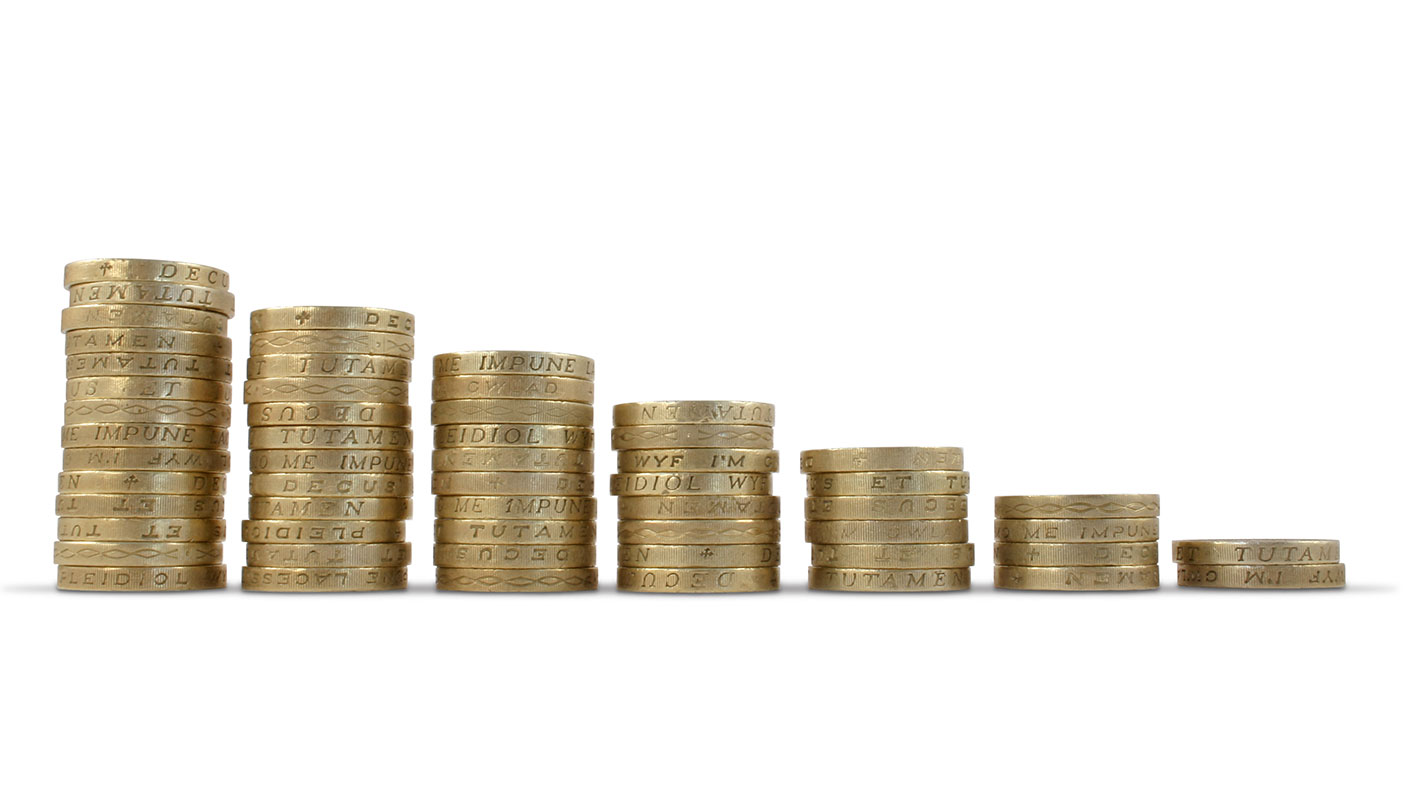What is a dividend yield?
Learn what a dividend yield is and what it can tell investors about a company's plans to return profits to its investors.


A dividend yield tells us what percentage of a company’s current share price is paid out in dividends each year.
A company usually pays a dividend as a way of returning excess profits to investors. It can also be described as a reward or thank you to shareholders for taking on the risk of investing in the stock in the first place.
What is a dividend?
The main aim of any business is to make a profit, otherwise, it’s not a productive use of capital.
MoneyWeek
Subscribe to MoneyWeek today and get your first six magazine issues absolutely FREE

Sign up to Money Morning
Don't miss the latest investment and personal finances news, market analysis, plus money-saving tips with our free twice-daily newsletter
Don't miss the latest investment and personal finances news, market analysis, plus money-saving tips with our free twice-daily newsletter
Profits are used to pay staff, invest in growth, strengthen the balance sheet for a rainy day and reward the investors who backed the business in the first place.
A company might choose to reward its investors with a dividend, assuming it’s generating enough cash to cover all its other operating expenses and spending obligations.
Each year a business’ managers, or in the case of a public company, its directors, will sit down to decide whether they should pay a dividend, and if so, how much they should return to shareholders and how much they should hold back in the business.
For example, if profits (after tax) are £100,000 and £50,000 is paid out as a cash dividend, then only £50,000 can be kept back by the directors for growth. That's why (traditionally at least) some firms grow fast, but pay low dividends (technology firms are typical) while others offer high dividends but lower growth prospects (utilities often fit this description).
What is a dividend yield?
The return from dividends on any given stock or share index is measured by the dividend yield. This is the latest annual dividend, divided by the current share price as a percentage.
For example, if a company paid a single dividend of 10p per share this year and its shares are trading at a price of 1,000p, the dividend yield would be 10p ÷ 1,000p = 0.01 (which is 1%).
If the firm paid a dividend of 5p after half a year (usually called an interim dividend) and a further 10p at the end of the financial year (a final dividend), you would add the two together and get (5p + 10p) ÷ 1,000p = 0.015 (1.5%).
Companies don’t have to pay dividends
It’s important to understand that companies don't have to pay dividends. After all, dividends are a return of profit. If a business isn’t making any money, it shouldn’t be giving money back to its shareholders.
Some public companies try to pay what’s known as a “progressive dividend.” This means they try to keep the dividend growing year after year. These are usually defensive businesses, such as utility companies, which have predictable revenue streams.
However, other equities might choose to pay a smaller regular dividend, and then present shareholders with large, one-off special dividends when profits are better than expected. This is quite common in the resource sector, where commodity prices (and as a result, profits) can be very volatile.
There are lots of factors that determine whether or not a company will pay a dividend to its shareholders. And just because they paid one this year, doesn't mean they have to do it next year.
How to calculate a historic dividend yield
To get a more complete picture of a firm’s dividend the dividend yield can be calculated based on what the firm paid in the past 12 months or calendar year (sometimes referred to as the trailing or historical dividend yield) or on the amount that it’s expected to pay over the next 12 months (a forecast or forward dividend yield).
Trailing yields reflect what has actually been paid – but past dividends may not be sustainable.
Forecast yields reflect any changes that analysts expect – but forecasts are unreliable. Investors should look at both, but should not rely solely on either to make their decision: you need to think about the long-term prospects for a firm’s dividends, including any signals that the market is sending.
Dividend red flags
A good way to determine whether or not a company can maintain its dividend is to look for some common red flags. These may indicate an imminent dividend cut.
For example, a firm with a very high yield may look cheap, but this could indicate no one believes it will actually be paid. This is a common red flag.
Another red flag is high debt levels. If a company has a lot of debt, these obligations will fall due at some point. From a business point of view, paying off creditors must be done before and return of profits to shareholders is considered.
It's important to safety-check the dividend, to test just how sustainable it is – especially if the dividend yield looks particularly large compared to the rest of the sector.
Using dividend cover to check the dividend yield
There are several ways to sense-check dividend yield sustainability.
One way is to look at “dividend cover” or “payout ratios”.
Dividend cover measures the number of times profits cover the payout. The earnings per share (EPS) figure is usually used in this calculation.
EPS measures total net profits divided by the total number of shares outstanding for a public company. If the business reports EPS of 20p and pays a dividend of 10p per share, its cover is two. That’s a healthy level.
While cover usually differs across sectors, theoretically the higher the figure, the more secure the dividend.
A dividend that is well covered typically signals that a company has sufficient capital to pay out dividends. But this does not necessarily mean the company can actually afford to pay the dividend, let alone actually will.
Get the latest financial news, insights and expert analysis from our award-winning MoneyWeek team, to help you understand what really matters when it comes to your finances.

Rupert is the former deputy digital editor of MoneyWeek. He's an active investor and has always been fascinated by the world of business and investing. His style has been heavily influenced by US investors Warren Buffett and Philip Carret. He is always looking for high-quality growth opportunities trading at a reasonable price, preferring cash generative businesses with strong balance sheets over blue-sky growth stocks.
Rupert has written for many UK and international publications including the Motley Fool, Gurufocus and ValueWalk, aimed at a range of readers; from the first timers to experienced high-net-worth individuals. Rupert has also founded and managed several businesses, including the New York-based hedge fund newsletter, Hidden Value Stocks. He has written over 20 ebooks and appeared as an expert commentator on the BBC World Service.
-
 What do falling interest rates mean for you?
What do falling interest rates mean for you?You may think that only businesses and politicians should pay attention to choices made by the Bank of England, but its interest rates decisions also have an impact on your personal finances. We explain how.
-
 Halifax: UK house prices at lowest level since summer as growth slows
Halifax: UK house prices at lowest level since summer as growth slowsProperty prices fell by 0.6% month-on-month in a typical Christmas season slowdown, Halifax’s latest house price index shows.
-
 What's behind the big shift in Japanese government bonds?
What's behind the big shift in Japanese government bonds?Rising long-term Japanese government bond yields point to growing nervousness about the future – and not just inflation
-
 Halifax: House price slump continues as prices slide for the sixth consecutive month
Halifax: House price slump continues as prices slide for the sixth consecutive monthUK house prices fell again in September as buyers returned, but the slowdown was not as fast as anticipated, latest Halifax data shows. Where are house prices falling the most?
-
 Rents hit a record high - but is the opportunity for buy-to-let investors still strong?
Rents hit a record high - but is the opportunity for buy-to-let investors still strong?UK rent prices have hit a record high with the average hitting over £1,200 a month says Rightmove. Are there still opportunities in buy-to-let?
-
 Pension savers turn to gold investments
Pension savers turn to gold investmentsInvestors are racing to buy gold to protect their pensions from a stock market correction and high inflation, experts say
-
 Where to find the best returns from student accommodation
Where to find the best returns from student accommodationStudent accommodation can be a lucrative investment if you know where to look.
-
 The world’s best bargain stocks
The world’s best bargain stocksSearching for bargain stocks with Alec Cutler of the Orbis Global Balanced Fund, who tells Andrew Van Sickle which sectors are being overlooked.
-
 Revealed: the cheapest cities to own a home in Britain
Revealed: the cheapest cities to own a home in BritainNew research reveals the cheapest cities to own a home, taking account of mortgage payments, utility bills and council tax
-
 UK recession: How to protect your portfolio
UK recession: How to protect your portfolioAs the UK recession is confirmed, we look at ways to protect your wealth.